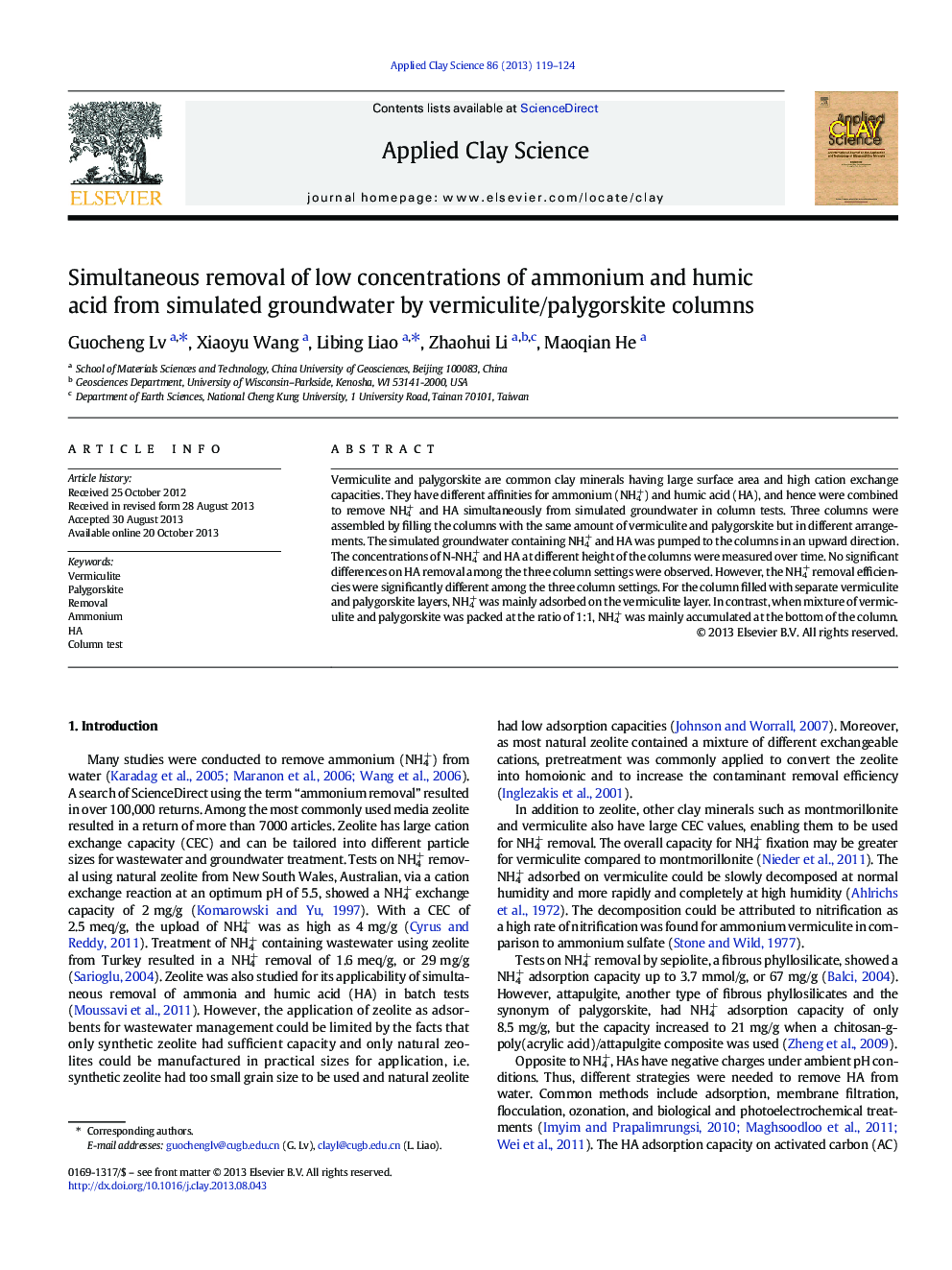| Article ID | Journal | Published Year | Pages | File Type |
|---|---|---|---|---|
| 8047270 | Applied Clay Science | 2013 | 6 Pages |
Abstract
Vermiculite and palygorskite are common clay minerals having large surface area and high cation exchange capacities. They have different affinities for ammonium (NH4+) and humic acid (HA), and hence were combined to remove NH4+ and HA simultaneously from simulated groundwater in column tests. Three columns were assembled by filling the columns with the same amount of vermiculite and palygorskite but in different arrangements. The simulated groundwater containing NH4+ and HA was pumped to the columns in an upward direction. The concentrations of N-NH4+ and HA at different height of the columns were measured over time. No significant differences on HA removal among the three column settings were observed. However, the NH4+ removal efficiencies were significantly different among the three column settings. For the column filled with separate vermiculite and palygorskite layers, NH4+ was mainly adsorbed on the vermiculite layer. In contrast, when mixture of vermiculite and palygorskite was packed at the ratio of 1:1, NH4+ was mainly accumulated at the bottom of the column.
Related Topics
Physical Sciences and Engineering
Earth and Planetary Sciences
Geochemistry and Petrology
Authors
Guocheng Lv, Xiaoyu Wang, Libing Liao, Zhaohui Li, Maoqian He,
